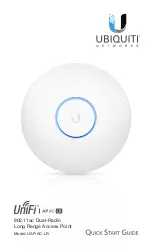
PMP Synchronization Solutions User Guide
Installing a CMM4
PMP-0297 007v001 (January, 2017)
3-49
Conforming to Regulations
For all electrical purposes, ensure that your network conforms to applicable country and local
codes, such as the NEC (National Electrical Code) in the U.S.A. If you are uncertain of code
requirements, engage the services of a licensed electrician.
In particular, many codes require that wired electrical devices like the 54 VDC power supply either
terminate in a plug connection or be wired with an on/off switch, and not be hard-wired to
AC/mains.
Protecting Cables and Connections
Cables that move in the wind can be damaged, impart vibrations to the connected device, or both.
At installation time, prevent these problems by securing all cables with cable ties, cleats, or
weather-resistant tape.
The cable can be a path for water to follow to enter the cable connector or even the module. You
can prevent this problem by including and securing a drip loop where the cable enters the module
enclosure.
Testing the Components
The best practice is to connect all the components - BHs, APs, GPS antenna, and CMM4 - in a test
setting and initially configure and verify them before deploying them to an installation. However,
circumstances or local practice may require a different practice.
Unpacking Components
When you receive products, carefully inspect all shipping boxes for signs of damage. If you find
damage, immediately notify the transportation company.
As you unpack the equipment, verify that all the components that you ordered have arrived. Save
all the packing materials to use later, as you transport the equipment to and from installation
sites.
Cables
Information on cable planning, ordering, and design is covered on page
Installing a GPS Antenna
The following information describes the recommended tools and procedures to mount the GPS
antenna.
















































